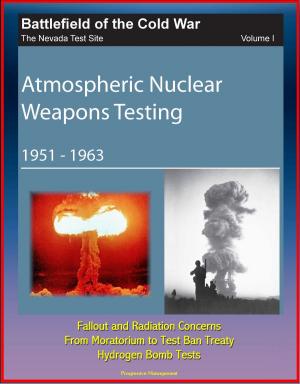Toward a Balanced View of Charismatic Leadership: Unique Scholarly Analysis of the Charisma of Army Leaders Through Classification of Speech, The Relationship with Followers
Nonfiction, Health & Well Being, Psychology, Emotions, History, Military, United States| Author: | Progressive Management | ISBN: | 9780463203446 |
| Publisher: | Progressive Management | Publication: | April 24, 2018 |
| Imprint: | Smashwords Edition | Language: | English |
| Author: | Progressive Management |
| ISBN: | 9780463203446 |
| Publisher: | Progressive Management |
| Publication: | April 24, 2018 |
| Imprint: | Smashwords Edition |
| Language: | English |
Americans idolize leaders, especially charismatic ones. Charismatic leaders, in particular, have many favorable qualities ascribed to them by their followers because they incite the passion of those they lead through their evaluation of the status quo, innovation, empowerment of those followers, vision and the communication of their vision. The last decade in the Army created an environment in which charismatic leaders could thrive as the situation that the military, and the nation, found itself in was anything but status quo. By analyzing manner of speech to classify division commanders as charismatic or not and further examining their behavior through the use of interviews, this thesis found a correlation between charisma and the impact of a leader on his followers and organization. Furthermore, analysis of the Multifactor Leadership Questionnaire in comparison to the Multi-Source Assessment Feedback, shows that charisma can be identified early in one's career which may allow the Army the opportunity to develop charismatic leaders in such a way to build on their strengths while helping them avoid pitfalls.
CHAPTER 1 INTRODUCTION * Overview * Ideal Leadership * Primary Research Question - Is there a correlation between the charisma of division commanders and their impact on their followers and organizations? * Secondary Research Question * Assumptions * Definitions * Limitations * Delimitations * Conclusion * CHAPTER 2 LITERATURE REVIEW * History of Charismatic Leadership Research * Charismatic Leadership * Theoretical Framework: Social Identity Theory * Measuring Charisma * Common Ground in Current Research * CHAPTER 3 RESEARCH METHODOLOGY * Overview * Data Collection Methods * Data Analysis Method * CHAPTER 4 ANALYSIS * Negation * Inclusion * Abstraction * Classifying Charismatic Leaders * Success of Leaders * Charismatic Leader Attributes in Action * The Relationship with Followers * Practically Measuring Charisma * Conclusion * CHAPTER 5 CONCLUSIONS AND RECOMMENDATIONS * The Positive Impacts * The Negative Impacts * Early Identification * Conclusion * Limitations of Current Research * Recommendations for Future Research
Americans idolize leaders, especially charismatic ones. Charismatic leaders, in particular, have many favorable qualities ascribed to them by their followers because they incite the passion of those they lead through their evaluation of the status quo, innovation, empowerment of those followers, vision and the communication of their vision. The last decade in the Army created an environment in which charismatic leaders could thrive as the situation that the military, and the nation, found itself in was anything but status quo. By analyzing manner of speech to classify division commanders as charismatic or not and further examining their behavior through the use of interviews, this thesis found a correlation between charisma and the impact of a leader on his followers and organization. Furthermore, analysis of the Multifactor Leadership Questionnaire in comparison to the Multi-Source Assessment Feedback, shows that charisma can be identified early in one's career which may allow the Army the opportunity to develop charismatic leaders in such a way to build on their strengths while helping them avoid pitfalls.
CHAPTER 1 INTRODUCTION * Overview * Ideal Leadership * Primary Research Question - Is there a correlation between the charisma of division commanders and their impact on their followers and organizations? * Secondary Research Question * Assumptions * Definitions * Limitations * Delimitations * Conclusion * CHAPTER 2 LITERATURE REVIEW * History of Charismatic Leadership Research * Charismatic Leadership * Theoretical Framework: Social Identity Theory * Measuring Charisma * Common Ground in Current Research * CHAPTER 3 RESEARCH METHODOLOGY * Overview * Data Collection Methods * Data Analysis Method * CHAPTER 4 ANALYSIS * Negation * Inclusion * Abstraction * Classifying Charismatic Leaders * Success of Leaders * Charismatic Leader Attributes in Action * The Relationship with Followers * Practically Measuring Charisma * Conclusion * CHAPTER 5 CONCLUSIONS AND RECOMMENDATIONS * The Positive Impacts * The Negative Impacts * Early Identification * Conclusion * Limitations of Current Research * Recommendations for Future Research















